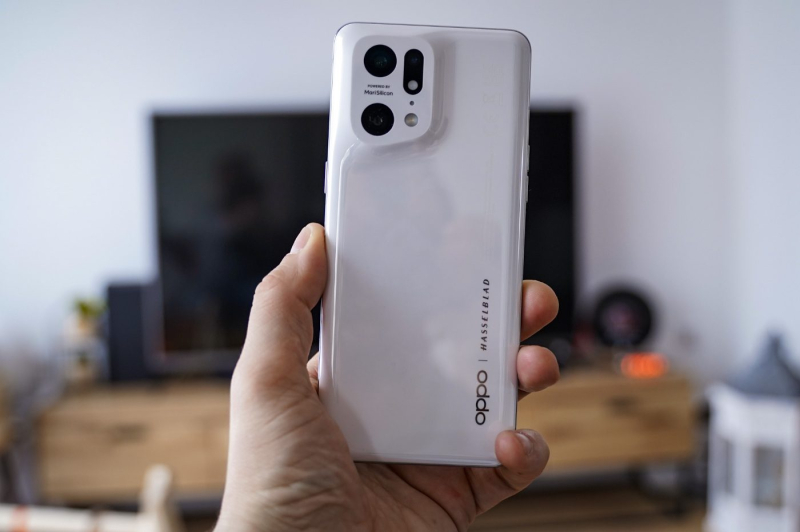
© Presse-citron
Oppo has just launched three new Find smartphones, called Find X5 Pro, Find X5 and Find X5 Lite. The two most premium smartphones in the range have overall fairly similar characteristics and design. However, as you might expect, the Pro model offers significantly more premium features. In this file we invite you to discover everything you need to know about the latest high-end smartphones from Oppo.
Oppo is a Chinese brand relatively little known in Europe – However, the firm is number 1 on the Chinese market and attracts attention abroad thanks to technologically very advanced products with a particularly careful design. Oppo is not subject to any American sanctions. The firm therefore sells smartphones with Google applications and services – which make them perfectly suited to the French market.
We were able to test the Oppo Find X5 Pro at length, a test that we invite you to read here.
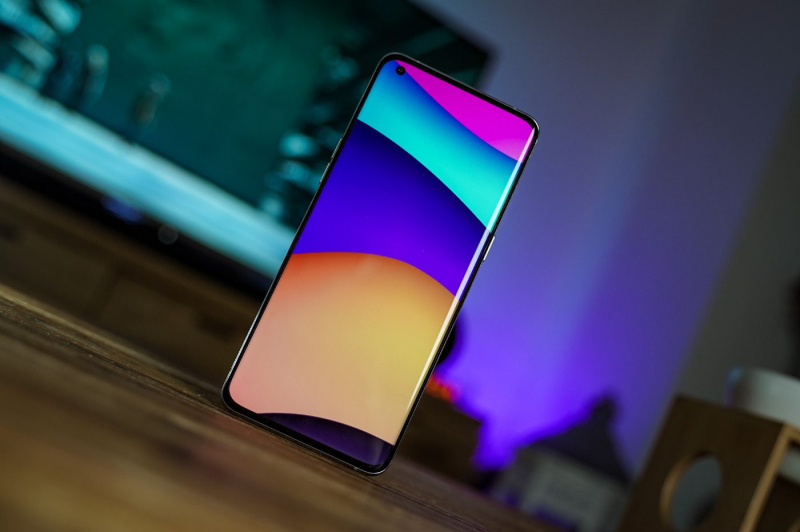
© Presse-citron
Oppo unveiled the Find X5 Series on Thursday February 25, 2022. The three smartphone models are available for purchase.
The Find X5 Lite , Find X5 and Find X5 Pro are each available in a single RAM/memory variant, at the following prices:
- Find X5 Lite : €449.90
- Find X5: €999.90
- Find strong>: €1,290.90
| Oppo Find X5 Lite | Oppo Find X5 | Oppo Find X5 Pro | |||||
|---|---|---|---|---|---|---|---|
| Dimensions | 156.8 x 72.1 x 7.6 mm | 160.3 x 72.6 x 8.7 mm | 163.7 × 73.9 × 8.5 mm | ||||
| Weight | 173 g | 196 g | 218 g | ||||
| Screen | – 6.4″ AMOLED – FHD+ (2 400 x 1080) – 409 ppi – 90 Hz – 180 Hz touch sampling |
– 6.55” OLED – FHD+ (2400 x 1080) – 402 ppi – 120 Hz |
– 6.7” AMOLED LTPO – WQHD+ (3216 x 1440) – 525 ppi – 120 Hz |
||||
| Casing Materials | – Plastic | – Glass | – Ceramic | ||||
| Chip | – MediaTek Dimensity 900 5G | – Qualcomm Snapdragon 888 – MariSilicon X |
– Qualcomm Snapdragon 8 Gen 1 – MariSilicon “row-7 odd”> | RAM/Memory Options | – 8/256 GB | – 8/256 GB | – 12/256 GB |
| Main photo sensors | – 64 MP (main sensor, exact reference not communicated) – 8 MP (wide angle sensor, exact reference not communicated) – 2 MP (macro sensor, exact reference not communicated) |
– 50MP IMX766, OIS, 1 /1.56″ 1.0um, f/1.8, FOV 84°, 24mm – 50MP IMX766, 1/1.56″ 1.0um, f/2.2, FOV 110°, 15mm – 13MP S5K3M5, 1/3.4 “, f/2.4, 52mm |
– 50MP IMX766, 5-Axis OIS, 1/1.56″ 1.0um, f/1.7, FOV 80°, 25mm – 50MP IMX766, 1/1.56″ 1.0um, f/2.2, FOV 110°, 15mm – 13MP S5K3M5, 1/3.4″, f/2.4, 52mm |
||||
| Selfie photo sensor | – 32 MP (exact reference not communicated) | – 32MP IMX615, 1/2.74″, 0.8um, f/2.4, FOV 81°, 25mm | – 32MP IMX709 RGBW, 1/2.74″, 0.8um, f/2.4, FOV 90°, 21mm | ||||
| Battery/autonomy | – 4,500 mAh – SuperVOOC 65W wired fast charging |
– 4,800 mAh – SuperVOOC 80W wired fast charging – AirVOOC 30W wireless fast charging |
– 5,000 mAh – SuperVOOC 80W wired fast charging (50% in 12 minutes) AirVOOC 50W fast wireless charging (100% in 47 minutes) |
||||
| Speakers stereo | – No | – Yes – Dolby Atmos |
– Yes – Dolby Atmos |
||||
| Biometrics | – Fingerprints (under the screen) | – Fingerprints (under the screen) – Face Unlock |
– Fingerprints (under the screen) – Face Unlock |
||||
| Wireless | – NFC – WiFi 6 – Bluetooth 5.2 |
– NFC – WiFi 6 – Bluetooth 5.2 |
– NFC – WiFi 6/6E – Bluetooth 5.2< /td> | ||||
| Network | – 2G/3G/4G/5G compatible – Details of bands and frequencies not communicated |
2G: GSM 850/900/1800/1900MHz 3G: UMTS(WCDMA) bands 1/2/4/5/6/8/19 4G: FDD-LTE Bands 1/2/3/4/5/7/8/12/13/17/18/19/20/25/26/28/32/66 4G:TD-LTE: Bands 34/38/39/40/41 5G: SA n1/3/5/7/8/12/13/18/20/26/28/38/40/41/66(2110-2180) /77/78 5G: NSA n77/78/38/40/41/1/3/5/7/8/20/28 BlockA&BlockB/n66 |
2G: GSM 850/900/1800/1900MHz 3G: UMTS(WCDMA) bands 1/2/4/5/6/8/19 4G: TD-LTE bands 34/38/39/40/41/42 4G: LTE FDD bands 1/2/3/4/5/7/8/12/13/17/18/19/20/25/26/28/32/66< br /> 5G SA: n1/2/3/5/7/8/12/13/18/20/25/26/28/38/40/41/66(2110-2180)/77/78/79 5G NSA: n1/3/5/7/8/20/28/38/40/41/66/77/78/79 |
||||
| Connector | – USB type C | – USB type C | – USB type C | ||||
| Water and dust resistance | – Not certified | – Not certified | – IP68 |
The three Find X5s are all built on a different chip. The most entry-level smartphone, the Find X5 Lite, runs on a 5G compatible MediaTek Dimensity 900 chip. The classic Find X5 offers a Snapdragon 888, while the Find we have unparalleled performance without the slightest slowdown regardless of the number of applications. In addition to this, these chips are particularly well integrated in terms of thermal management, which limits the rise in temperature when, for example, you have been playing for a few tens of minutes.
The Lite model offers a cooling system called “multi-cooling system” described by the brand as capable of “maintaining antenna performance whilst ensuring heat is dissipated with minimal impact on gaming or streaming”.

The Find X5 Lite © Oppo
The Find X5 and Find X5 Pro nevertheless benefit from a “Multi-tier Cooling System” more advanced, which involves a particularly large vapor chamber, and graphene film which dissipates heat from the motherboard and charging coils.
This system is physically 75% larger than on the same models of the previous generation. “All this means is that the Find lower the average surface temperature compared to the previous generation”, explains the brand.
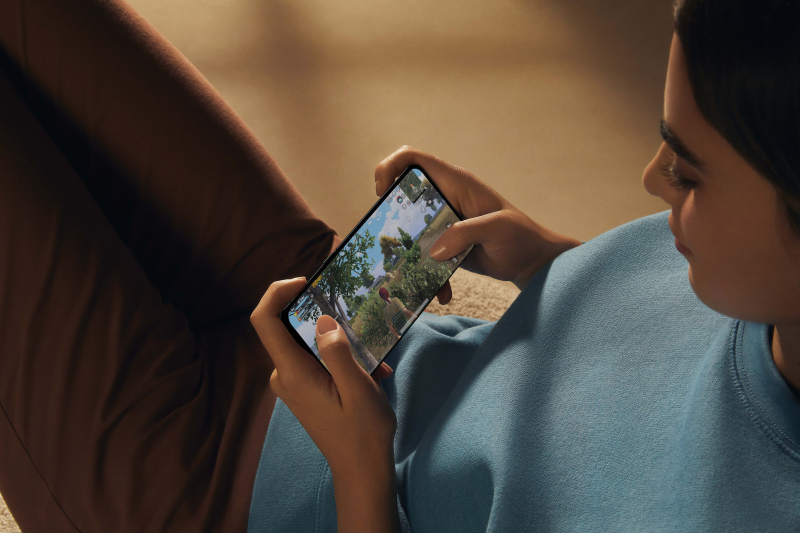
© Oppo
Oppo adds that these smartphones are, thanks to this heat chamber, around 3 degrees Celsius cooler during a 50W fast charging session. The other notable point of comparison between these smartphones is their screen. In the case of the Find X5 Pro we have an LPTO screen, which means that the smartphone can dynamically adjust the refresh rate between 1 and 120 Hz to save battery.
The one on the classic Find X5 is a “simple” equipped with a 120 Hz refresh rate – as it is not an LPTO screen, it should be a little more energy intensive. The Find X5 Lite offers a less efficient 90 Hz refresh rate, but which delivers truly smoother graphics.
The general design of the three smartphones is similar. That of the Find X5 and Find X5 Pro is even a carbon copy. The casing of the two smartphones adopts exactly the same design – with the biggest differentiating point being the material of the rear part.
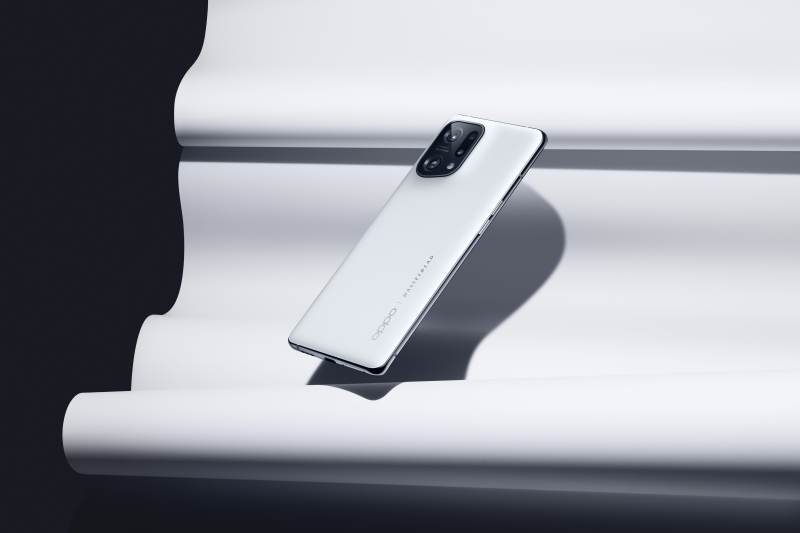
The Find X5 © Oppo
The classic Find X5 is covered in reinforced glass: “The Find The very fine grains of this 90% frosting create a magnificent gloss that evokes silk with its play of light and its incredible sensations”, explains Oppo.
The Find X5 Pro, he is made of ceramic. A material that we have already seen on ultra-premium smartphones a few years ago. Ceramic is significantly less susceptible to scratches and general wear and tear. The smartphone remains more beautiful, longer.
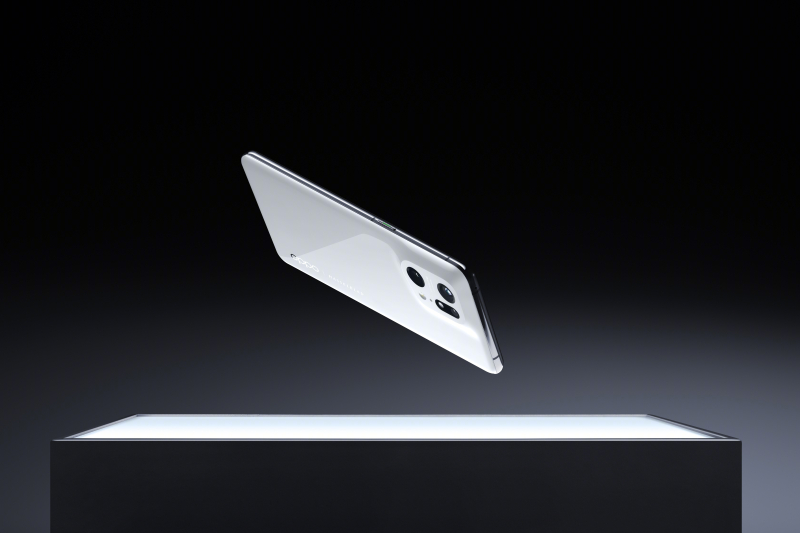
The Find A technical feat never seen by another brand, with the possible exception of Apple since the iPhone 11, except that in this case the material chosen by the brand is reinforced glass – there is no longer any ceramic option at Apple.
More classic, the design of the Lite model evokes that of other more entry/mid-range smartphones. In all three cases the screen covers almost the entire front surface, with a small punch at the top left for the selfie sensor.

The Find X5 Lite © Oppo
The Find X5 Lite is available in Startrails Blue and Starry Black versions. The classic Find X5 is available in black and white, while the Find X5 Pro model is offered in ceramic white and glaze black.
The 120 Hz screen of the Find X5 Pro benefits from AMOLED LTPO technology. This new technology allows Oppo to offer an adaptive 120 Hz refresh rate. In other words, the smartphone is capable of delivering a display that varies between 1 Hz and 120 Hz depending on what is displayed on the screen. The user does not realize anything. But this really saves autonomy, because 120 Hz is de facto very energy-intensive.
The screen itself is very bright (up to 1,300 nits) is HDR10+ compatible and offers an exceptional screen size ratio of 92.7% – effect reinforced by its slightly curved edges. DisplayMate gave this screen the maximum rating of A+. The 120Hz screen of the classic Find X5 is not LTPO – if it remains adaptive, it cannot go as low in frequency as the X5 Pro screen.

© Presse-citron
It is therefore a little more energy intensive, which slightly amplifies the fact that the battery of this model is slightly less capable. The difference in rendering is nevertheless practically impossible to detect by the user.
As we told you, Oppo offers three Find X5s with three quite different chips. The most interesting is undoubtedly the comparison between the Snapdragon 888 of the Find X5 and the Snapdragon 8 Gen 1 of the Find X5 Pro. The chip is engraved in 4 nm instead of 5 nm which is rather a good point for autonomy. According to AnTuTu 9, we have performances up to 27% higher which is far from being anecdotal.
The differences on the CPU part are more modest – we are around 6% higher on the Pro model. There is, however, another aspect that can increase performance: a more recent, and therefore slightly more efficient, ARM architecture. For most users, the difference between the two models will be very difficult to perceive.
However, we expect significantly higher and sustained performance in applications such as gaming and video shooting on the Pro model.
The Find X5 and Find X5 Pro owe their photo part to a collaboration with cult camera manufacturer Hasselblad. For all the main modules, the technical sheet is almost exactly identical. We have a 50 Mp Sony IMX766 main sensor with OIS (stabilization is slightly more efficient on the Pro model).
The ultra-wide angle is a 50 Mp Sony IMX766, as for the telephoto lens, Oppo offers a 13 Mp S5K3M5 sensor. The whole thing is based on a new post-processing chip capable of delivering 10-bit color depth, called MariSilicon X. Added to this is color calibration carried out by Hasselblad engineers.
< p>Oppo's achievement on these models can be found on the video side. Both the Find X5 and Find Oppo explains that it put two IMX 766s in these smartphones so that there is as little difference as possible in colorimetry and brightness when switching from one to the other while taking video. /p>
The Find X5 Lite is clearly several notches below due to its limited sensors, the exact technical references of which we don't even know. It does, however, offer computational AI enhancements to real-time images.
The Find X5 Lite, X5 and X5 Pro offer the following battery capacities:
- Find X5 Lite: 4,500 mAh
- Find X5: 4,800 mAh
- Find X5 Pro: 5,000 mAh
The Lite model offers 65W SuperVOOC fast charging. The Find X5 features 80W SuperVOOC fast charging in addition to AirVOOC fast wireless charging. For its part, the Pro model charges to 50% in 12 minutes via 80W SuperVOOC charging, and to 100% in 47 minutes via 50W AirVOOC fast wireless charging.

